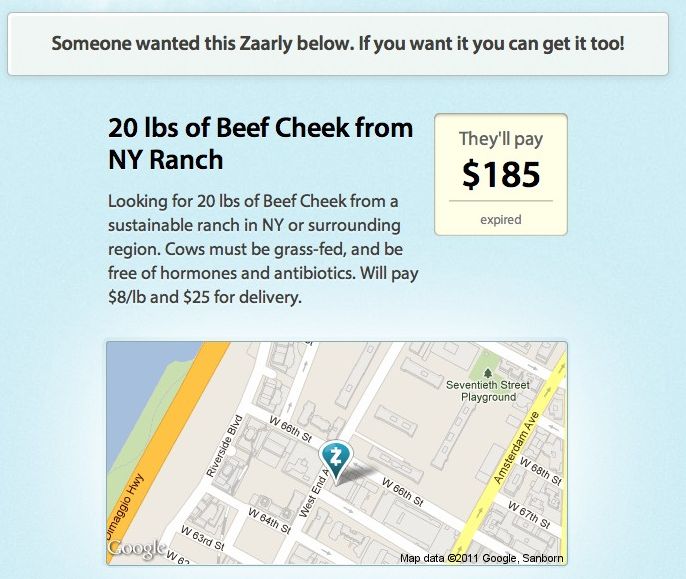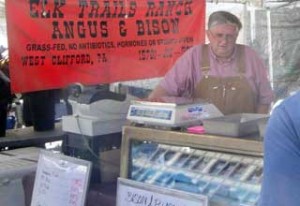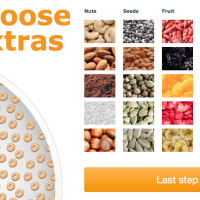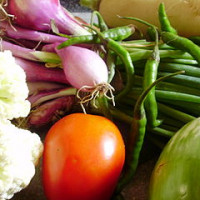How do you source 20 lbs of grass-fed beef cheek from a local ranch with only two days notice?
A last minute change of menu left us with two days to secure beef cheek for our anniversary party. A nearly impossible amount to procure from a small farm, considering each cow only has 2 cheeks weighing in at 2 pounds a piece. We were already using Zaarly, a new startup that allows you to buy and sell anything with people nearby and our title sponsor for the event, to source ingredients for the party and skeptically decided to post an offer. Within hours the impressive Zaarly team located the beef and coordinated our order with a local rancher.
 Building a marketplace is no easy feat- it requires developing a two-sided user-base where one group becomes increasingly more valuable to the other the more the other group participates in the platform. Zaarly worked relentlessly on the back-end work to ensure that our offer was fulfilled and the transaction was a success, turning me into a convert. Online platforms, like Zaarly, have the potential to make it easy for small-medium sized farmers to sell directly to consumers and will be hugely important in helping many producers achieve financial sustainability. These platforms, however, will face challenges acquiring users such as farmers who spend limited time online.
Building a marketplace is no easy feat- it requires developing a two-sided user-base where one group becomes increasingly more valuable to the other the more the other group participates in the platform. Zaarly worked relentlessly on the back-end work to ensure that our offer was fulfilled and the transaction was a success, turning me into a convert. Online platforms, like Zaarly, have the potential to make it easy for small-medium sized farmers to sell directly to consumers and will be hugely important in helping many producers achieve financial sustainability. These platforms, however, will face challenges acquiring users such as farmers who spend limited time online.
There are a lot of important lessons about building a successful online marketplace that can be learned from our experience working with Zaarly.
LESSON #1 MANUALLY CURATE THE MARKETPLACE UNTIL THE ECOSYSTEM IS DEVELOPED ENOUGH TO SUCCESSFULLY MEET THE NEEDS OF BUYERS AND SELLERS ON IT’S OWN
“I called about 15 ranches, they were all listed on the CSA NY website (for products other than vegetables),” said Zaarly employee Amanda Fick. “The ranchers were all really kind, and if they were given more lead time, a couple of them could have provided some beef cheek. The roadblock in this case is small local ranches is 20 lbs is A LOT, considering one head of cattle only has 2 cheeks. I also found that it depended on the way the cattle was slaughtered if the cheek could even be salvaged.”
Employee Sara Davidson was finally able to locate the beef cheeks from Ron Kips of Elk Trails Ranch. “This was our last shot, as we had literally contacted every single ranch, farmer, market and butcher we could find — and I had tried to find a phone number or email address for the ranch, but their website was down.”
“When I asked him for the beef cheeks,” she continued, “he was hysterically laughing for a few minutes. He then went on to tell me that earlier that morning, he had literally just loaded up a little more than 20 lbs of beef (and some bison) cheeks in a large trailer that he was going to drop off at the butcher to make jalapeno sausage. So, I said, “Hey Ron, I have no doubt in my mind that your jalapeno sausage is going to be incredible. But here’s exactly why it’s WAY more important for you to sell us your beef cheeks…”
LESSON #2: EDUCATE YOUR CLIENTS ON WHY THEY SHOULD USE YOUR PRODUCT NOT JUST HOW
Davidson walked Kips through the process of using fulfilling our offer, educating him about Zaarly and how he could use the site. According to Davidson, he was intrigued by the concept and excited about a new way to get his hormone-free, grass-fed, beef in the stomachs of the food tech movement’s best and brightest.
LESSON #3: LEARN FROM YOUR EARLY USERS EXPERIENCES AND ITERATE
By working with us, Zaarly was able to experience hands on how their platform might be applied to local food systems. They got invaluable insights about the challenges of engaging sellers that use the internet sparingly and the importance of making the platform “useable” for everyone.
“You never know who your audience will end up being, so the platform must be easy to use end to end. Technologies that sacrifice functionality for increased features will have difficulty gaining broad appeal. New technology platforms must be cognizant of that fact. Only once platforms truly understand that can they become a connecting point for everyone from businesses to interest groups to individuals in a better equipped, more transparent system,” said Zaarly Director of Marketing and Community Development Adam Hofman.




![Surveys of Chefs and Consumers Find Technology Use, But More Info is Needed [Survey]](https://foodtechconnect.com/wp-content/uploads/2012/02/chefcomputer-200x200.jpg)

